We are going in this article to talk about top things to do in Palermo, Italy. The beautiful Italian city located in Sicily. It has been called “the most romantic city in Italy” because of its unique atmosphere and history.
Palermo’s oldest neighborhood is adjacent to Vittorio Emanuele and the Normandy Palace and Cathedral, two of the biggest tourist attractions. The city was the capital of Sicily, a city of mosques and palaces, and expanded into a port of Arabs in the 9th to 11th centuries. The Normans occupied the city in 1072, and in a revolt known as the “Sicilian Vespers” in 1282, all the French took over the House of Aragon, which enlarged Palermo, the governor of Spain. killed or deported from Via Maqueda and Quattro Canti. After Sicily became an autonomous region in 1946, Palermo’s port and industry expanded, but Palermo remains the poorest part of Italy’s capital.
Our youtube channel
Table of Contents
Cattedrale (Cathedral) in Palermo, Italy
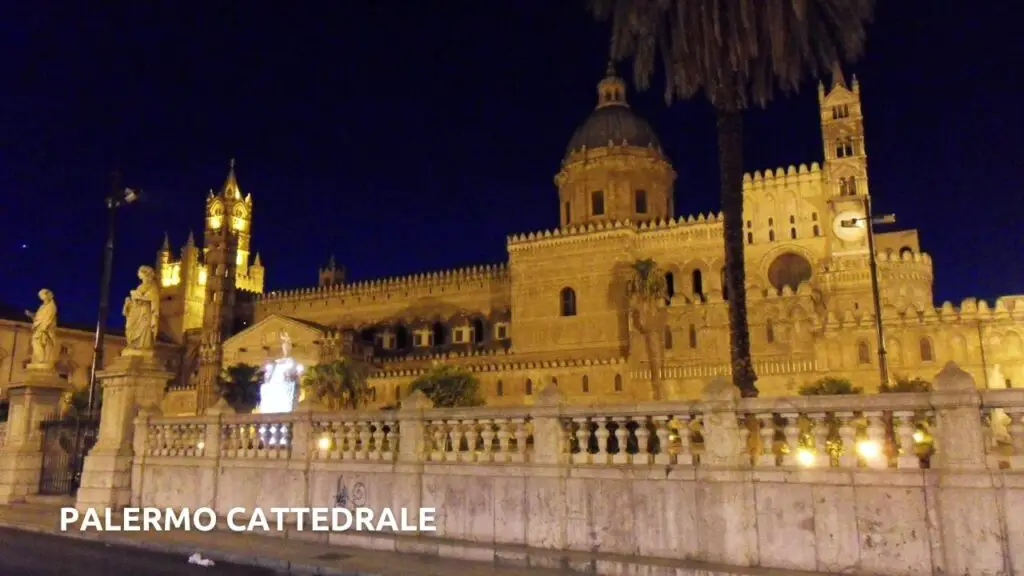
The eastern façade of the Cathedral of Palermo preserves three original Norman figures, a cruciform round arch, and a curved balustrade. The south side overlooking the square will be remembered for its 1453 Gothic Catalan portico. One of its pillars, along with early Arabic inscriptions, comes from a mosque. The triangular retaining wall features carvings, God the Father on His Throne , and above the doorway, a 13th-century mosaic of the Virgin Mary on a gold background. The bell tower was built in the 12th century, but was rebuilt in 1840. The Loggia dell’Incoronata to the left of the west appeared after the coronation of the king and was built in the 12th century but was changed on the 15th.
The rest of the Cathedral
The passage on the right, where the first two chapels contain the monumental tomb of the Norman-Hohenstaufen dynasty. The four sarcophagi are in purple Egyptian porphyry previously only allowed for the tombs of Roman and Byzantine emperors. The front left shows Frederick II supported by 4 Lions. The eardrum shows the Norman crown, and at the top is a decorative panel of the Virgin Mary and Christ between the symbols of the apostles. You can see these manuscripts in the tombs of the Sicilian nobles on the island. The picture-shaped sarcophagus on the right is the tomb of Frederick’s first wife, Constance of Aragon, who died in 1222. In 1781 the sarcophagus was opened.
A tomb that can be seen inside the cathedral has been found. The most outstanding of these is the almost precious crown of the Constance of Aragon, richly adorned with rows of pearls and precious stones.
Perhaps Frederick II was the emperor who ascended the throne in 1220 by Pope Honorius III. He would have put it in Constance’s grave.
Palazzo dei Normanni (Norman Palace) in Palermo, Italy
In the 9th century, the Arabs built palaces for the Emirs, and the palaces under Norman rulers and Hohenstaufen Frederick II became even more magnificent. It suffered a long period of neglect, until the Spanish governor remodeled it and expanded it for use as his residence. Since 1947 the Sicilian provincial council has been sitting here.
One prominent Norman structure remains on the northeast facade, with its tall Torre Pisa and its neat square stone blocks and ogival arched blind arcades. It is the last remaining of the original four towers. Inside is a typical square hall with an observation deck built in 1791. Enter the Cortile Maqueda, a square courtyard surrounded by three-story arcades with rounded arches dating from 1600. Steps are the heart of the palace, the Acapella Palatina and Appartamenti Reali (Royal Apartments) on the ground floor. Here, in the Hall of Hercules, now houses the Sicilian Parliament, as did the Parons in the Middle Ages . The Sala di Rutgiero is completely covered with mosaics showing hunting and animal scenes. To the west of the palace is the Porta Nuova , a grand gateway built in 1535.
Capella Palatina in Palermo, Italy
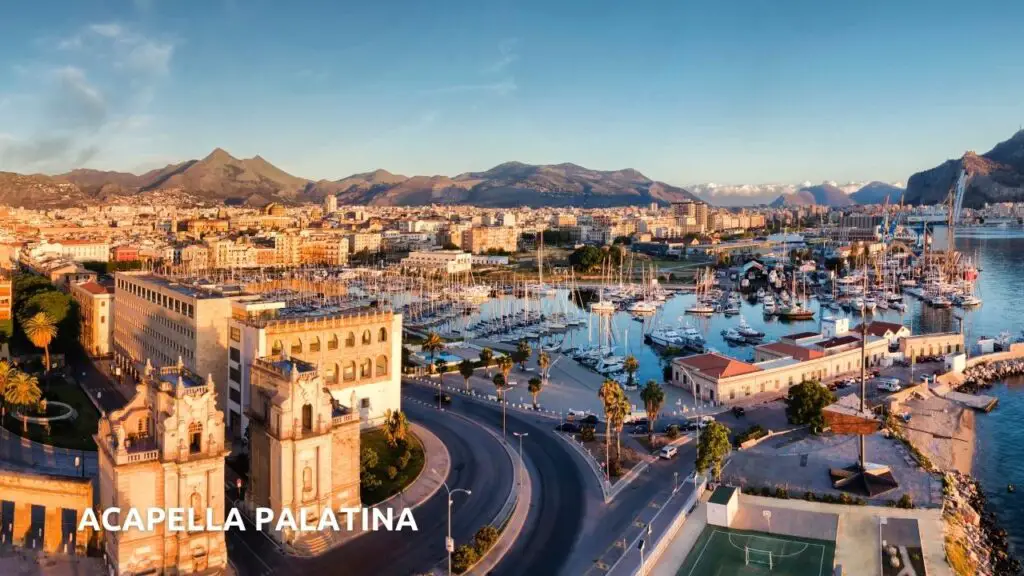
This Norman church was consecrated in 1140. The Mosaic of the Nativity was probably completed in 1143, later the mosaic of the nave. A mosaic was added to the western wall depicting Christ between Peter and Paul around 1350. Despite all the changes over the centuries, the interior has not lost the overall harmony between the Latin basilica, Byzantine domes and mosaic decorations, and Arab stalactite ceilings.
There is a mysterious half-darkness in this triple basilica, only shrouded in golden light. The wooden ceiling of the central aisle is decorated in Arabic style, and small scenes are painted on the stalactites. At the western end, to the left of the entrance, the marble platform upon which he ascended the throne, an example of Norman homage to royalty. The pulpit stands on carved columns decorated with inlays, and the Bible is engraved with the signs of the apostles and the symbols of John. A tall paschal candelabra is adorned in relief with flowers and figures, the center’s showing Christ with the King’s Roger II kneeling before him, the King’s founder.
However, it is the mosaics that cover all the inner walls of the chapel’s most famous nave. Its nave contains New Testament motifs in the central aisle and New Testament themes in the side aisles. You can see the creation at the top of the south wall of the central aisle, and the story that continues clockwise to the top of the north wall, all the way to Noah’s Ark building, where the story continues along the bottom of the south wall. In the side passage, there are scenes of Paul and Peter. The people in the dome of the sanctuary center on Christ, while the mosaics in the nest tell the continual story. This mosaic is from the 18th century, which differs in style and quality from the 12th century.
La Martorana in Palermo, Italy
The church of Santa Maria dell’Ammiraglio, called La Martorana, is famous for its beautiful 12th-century mosaics. The Baroque facade added with the bell tower after the earthquake of the 1720s blocks the view of this Arab-influenced church, but the basic architectural concept is Byzantine.
It was designed as a domed church with a citadel with four arms of equal length and three apses, a style that has been dominant since the Middle Byzantine period.
However, it has undergone significant changes. In 1200, a narthex, porch and bell tower were added to the west.
In 1435 King Alfonso gave the church to Sister Benedictona, and in the 17th century a nartex and an open atrium were included in the main structure reflecting the present irregular shape. Between 1683 and 1686, the central apse was plucked with a mosaic and replaced with a larger rectangular room.
The nuns also had murals painted on the walls.
But with all this, the most important part has been preserved. Mosaic has been preserved from about 1150 on the oldest forbidden zone in Sicily. The focus is on Christ the Pantocrator at the center, with the Greek inscription “I am the light of the world.” He is surrounded by four angels, and on the north side of the dome are the apostles and prophets at the four corners. The Triumphal Arch depicts Annunciation, while the Side apses are Mary’s parents. The birth of Christ and the death of Mary are depicted on the barrel. Two mosaics in the waiting room of the narthex show the thrones of Kings George and Roger II of Antioquia, the founder and patron deities of the church – what King Norman demanded against Byzantium and the Popes.
Archaeological Museum in Palermo, Italy
The collection of antiquities at the Museo Archeologico in Palermo is one of Italy’s finest museums and includes world-famous sites. The list of the most prominent highlights is also long.
A small cloister, built in the 17th century, contains items from Phoenicia, including the Palermo Stone, inscribed with hieroglyphs containing a list of pharaohs of the ancient Egyptian Empire (3238-2990 BC), and the great Cloister Zeus of the century BC statue. Also on the ground floor are the terracotta decorations of Temple C of Selinunte and undoubtedly the most important space, exhibiting primitive and classical sculptures from the temples of Selinunte.
The oldest fragments of the Selinunte room are on the right: four Salinas metopes (frieze panels) from about 575 BC. The Gods of Delphi (Artemis, Leto, Apollo), the Sphinx, the Abduction of Europa , and Hercules and the Bull . On the left wall are three metropolis depicting Apollo’s four chariots, Perseus killing Medusa. Hercules and Kirkoff . The back wall contains a reconstruction of Pronaos Frieze, part of the best part of Selinunte’s art (470-460 BC), and in the center is a bronze celine tech ephesbeAbout 470 BC, BC. The most important Etruscan works in Chieso are the tombstone with a banquet scene and the Tomb of the Dead (530-480 BC) and a statue of the 6th-century BC god Canopus.
On the next floor, the pottery section contains terracotta votive statues by Selinunte and bronzes from Etruscan, Greek and Roman civilizations. Pay particular attention to the Etruscan mirrors and large mercury staff. There are Greek marble carvings and an attic. The Roman sculptures include several key portraits, including a Roman mosaic of Lilliam showing the four seasons. If you still have enough energy left on the third floor, you can see prehistoric stone objects in the caves of Lévanzo and Addaura. Late Stone Age ships of the Stentinello civilization; engravings from the Copper Age of western Sicily; Greek ceramics, including vases from Corinthian, Ionic, Spartan, Attic, Etruscan, Italic and more. The wall decorations of the home in Solunto are worth seeing, as are the floor mosaics in Palermo and elsewhere.
Catacombe dei Cappuccini in Palermo, Italy
One of Palermo’s most bizarre attractions, but most popular, is the Capuchin Abbey, famous for its Catacombs.
This underground passage was carved out of volcanic rock after 1599 and served as a cemetery until 1881. Inside, you’ll encounter a terrifying scene surrounded by about 8,000 mummified corpses, arranged by castle and state. from the wall. The clothes they wear may look newer until a few years ago when the mummies were regularly changed fresh clothes by their relatives. The corpse was initially coli , in a small, closed, dry room, and after eight months was washed with vinegar, clothed, and placed in a wall or crevice in the wall. Taking pictures inside is strictly prohibited, so don’t plan on taking pictures that will surprise your friends.
Palazzo Abatellis and Galleria Regaldale della Sicily
Palazzo Abatellis was built in 1490 by Matteo Carnelivari in Catalan Gothic style for Francesco Abatellis, who was appointed to a high office at the court of King Ferdinand of Spain. It was a priority from the early 16th to early 19th centuries and today houses a local art gallery.
The square building has a decorated entrance and a courtyard with a two-story loggia on one side. The masterpiece of the painting collection was painted circa 1400 by an unknown artist in the old palace chapel, a large mural in a hospital in the Triumph of the Death (Palazzo Scláfani).
A standout among 15th-century Sicilian antiquities is the work of Antonello da Messina, with three plaques showing the fathers of the Church: Augustine, Gregory and Hieronymus, but especially in the form of a 1474 portrait of Our Lady . The works of the Flemish master include the 1510 wasp beesa trilogy by Jan Gossaert
Among the sculptures are the Madonnas and sculptures of the Gagini family, including Francesco Laurana’s Eleanor of Aragon from 1480 and Antonello Gagini’s dark marble-clad young man. Also worth noting are Moorish pottery from the 13th – 16th centuries and wooden ceiling parts from the late 14th century, excluded from the Chiaramonte Palace.
Quattro Canti in Palermo, Italy
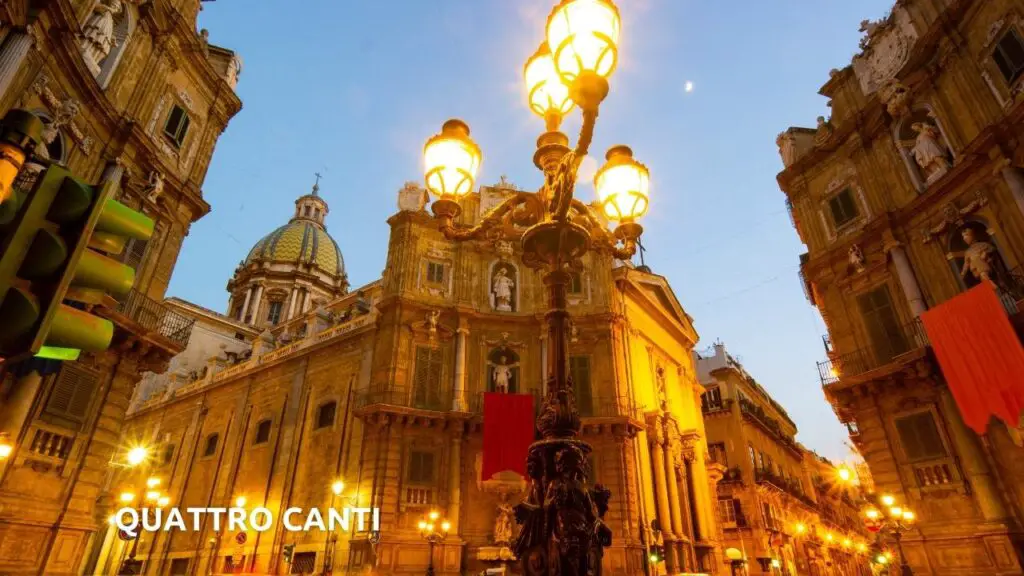
This open circular space was built between 1608 and 1620 by the Roman architect Giulio Lasso at the junction of two main streets in Palermo at that time. Cassarò (now known as Vittorio Emanuele) from the Norman Palace to the harbor Via Nuova was later renamed Maqueda after the Spanish Governor-General. Lasso designed this square with concave facades on each of its four corners. On the ground at each corner he built a fountain with sculpted figures on three upper levels with classical Greek columns. It was long before the end of 1620. As a result, it was possible to insert statues of four kings of Spain from 1516 on top of the statues symbolizing the Four Seasons. On the top floor there are 4 female patron saints.
Hidden behind one of the concave corners is the church of San Giuseppe dei Teatini, a large cathedral built between 1612 and 1645. The entrance is on Vittorio Emanuele. Inside is a dome fresco. A. Andrea Avellino’s Triumph Guglielmo Borreman (1724), painting by Pietro Novelli, late 18th century stucco and marble decoration.
San Giovanni degli Eremiti in Palermo, Italy
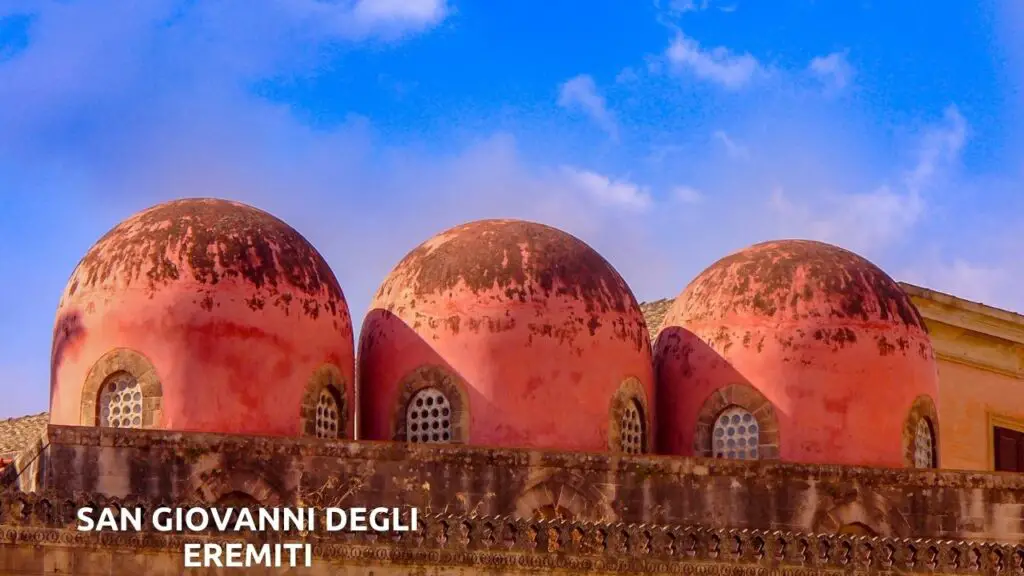
The cloister of this former monastery is an idyllic place to relax, perhaps considering the waves of others who occupied Palermo and this point. An Arab mosque once stood here, and a hall with five arches still stands on the south side of the Christian church. From the 6th century, there was a Benedictine monastery and the site was rededicated by the Normans. In 1132, Roger II built a square church with five domes, which we see today as a mourning chapel for the original court dignitaries. The interior is simple and undecorated, geometric shapes and hemispherical domes add height to the simple rectangular church. Atmospheric cloisters, mostly partially preserved, feature twin-column arcades, and remnants of Arab artifacts in courtyards.
San Cataldo in Palermo, Italy
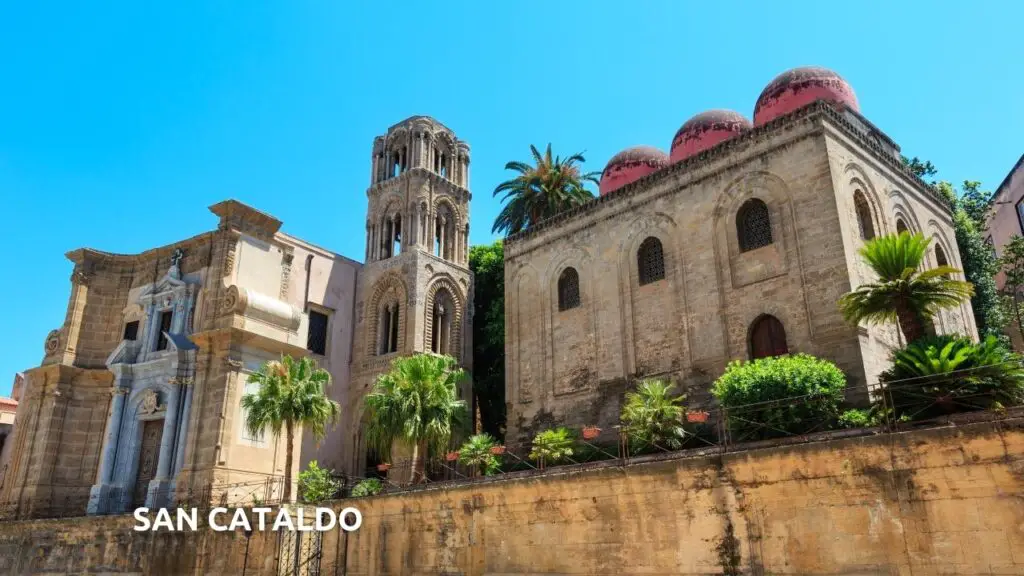
Built right next to Martorana, the church of San Cataldo has a sparkling red dome over a decorative cornice. When William succeeded his father in 1154, he appointed Maio of Bari as Grand Admiral. Maio dedicated his church to the Bishop of Cataldo in his hometown, Trani, and chose the Latin project Triple Aisled Cathedral. Its length is accentuated by three Arab domes above the elevated central nave. Its Arabian Norman character is also illustrated by its cubic facade with three windows on each side surrounded by blind arcades and finely carved ledges running around the upper edge. The same strong, square-shaped brick is visible inside. The interior is completely undecorated, with the exception of the beautifully decorated inlays and Corinthian capitals on the ancient four pillars.
Santa Maria di Gesù in Palermo, Italy
For the best views of Palermo and Conca de Oro, especially
in the morning light, go to the former Minorite monastery of Santa Maria di Gesù on the lower slopes of Monte Grifone. The monastery’s beautiful original monastery has been preserved, and inside the church is the tomb of its founder, Bishop Beato Matteo del Gatto of Agrigento. A monk will guide you to the Belvedere, from where you can enjoy the stunning views.
Santo Spirito (Chiesa del Vespro) in Palermo, Italy
The church of Santo Spirito, also known as the Church of Chiesa del Vespro or Vespers, refers to a dark event in the history of Palermo: in front of this church the Sicilian Vespers – all the French in Palermo (and later all of Sicily) were brought to the Aragonese conquerors.
When killed or expelled by – it began on March 31, 1282. It was an event that inspired Verdi to write an opera of the same name. The church was built in 1173-78 as the official residence of the Cistercian monastery outside the then city walls. It has changed frequently over the years, especially when Domenico Caracciolo, the governor, lowered the abbey in 1782 to make room for a new cemetery. It was restored to its original form in 1882, the 600th anniversary of the Sicilian Vespas.
The north side is impressively colorful and the east side is intersected by three semicircles made of lava. Signs of the older abbey buildings in the south transept can be seen. The interior, with tall columns supporting the Gothic arcades and two rows of round columns, reflects the rigor of the Cistercian order.
Teatro Massimo
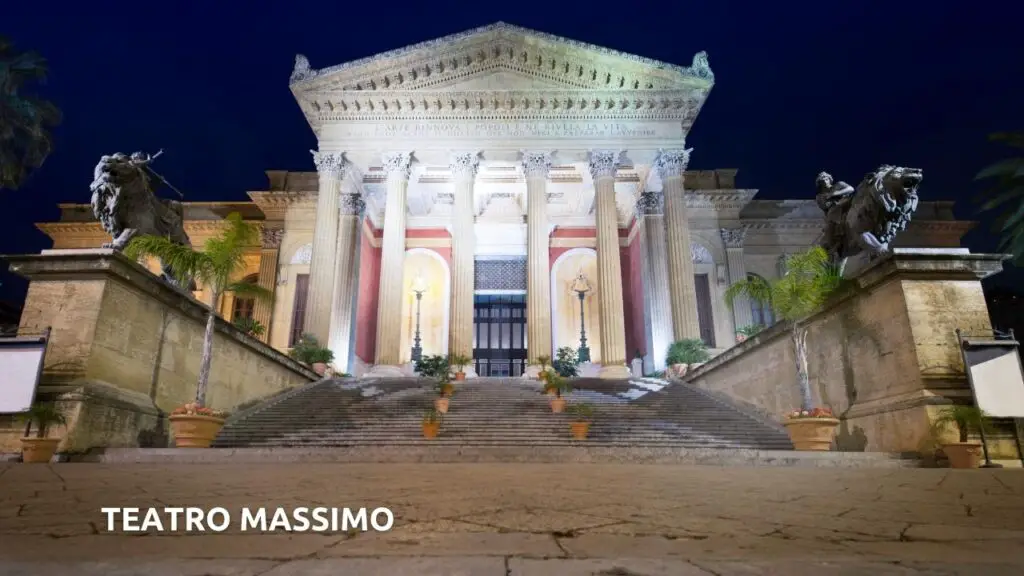
Giovanni Battista Basile and his son Ernesto built this 3,200-seat theater from 1875 to 1897. The theater was officially opened on 16 May 1897 with a performance of Verdi’s “Falstaff” and has since been one of Sicily’s major It became an opera house. Guided tours, conducted daily in English, take you to a lavish auditorium with box and frescoed domes. Notice the statue of Lyra by Mario Rutelli.
Palazzo Chiara Monte
This palace was built by the powerful noble Chiaramonte family of Agrigento in the 14th century when the family reached the heights of power. Work began in 1307 and continued until 1380, but the second floor was not completed. In 1396 Andrea Chiaramonte publicly beheaded in front of his palace for rebelling against the king. The palace was the residence of the governor from 1468 to 1517 and served as an inquisition around 1600 and as a courthouse in 1799. A massive four-winged block building around a square courtyard is now a museum. The ground floor has beautiful windows with columnar arcades. The 14th-century painted timber ceilings of the Sala Magna (Great Hall) by Cecco di Naro, Simone da Corleone and Pellegrino Darena show historical and legendary themes.
Foro Umberto I and the Botanical Gardens
Along the east and southeast coasts of Porta Felice extend Foro Umberto I, a wide boulevard with spectacular views of Palermo Bay. On a warm night, half of Palermo seems to be enjoying a walk here. At the southern end of Foro Umberto I am beautiful. Villa Giulia Park, also known as La Flora, was built in 1777. The botanical garden (Orto Botanico) has a variety of plants, including dates and coconut palms, banana trees, and excellent stands of bamboo and papyrus. One of Europe’s most important gardens is 11 hectares, and between the beds and greenhouses there are more than 12,000 plant species from all over the world.
You might be interesting in Rome, Italy travel guide



0 Comments